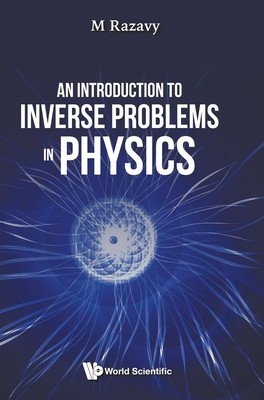
- We will send in 10–14 business days.
- Author: Mohsen Razavi
- Publisher: World Scientific Publishing Company
- ISBN-10: 9811221669
- ISBN-13: 9789811221668
- Format: 17 x 24.4 x 2.2 cm, hardcover
- Language: English
- SAVE -10% with code: EXTRA
Reviews
Description
This book is a compilation of different methods of formulating and solving inverse problems in physics from classical mechanics to the potentials and nucleus-nucleus scattering. Mathematical proofs are omitted since excellent monographs already exist dealing with these aspects of the inverse problems.The emphasis here is on finding numerical solutions to complicated equations. A detailed discussion is presented on the use of continued fractional expansion, its power and its limitation as applied to various physical problems. In particular, the inverse problem for discrete form of the wave equation is given a detailed exposition and applied to atomic and nuclear scattering, in the latter for elastic as well as inelastic collision. This technique is also used for inverse problem of geomagnetic induction and one-dimensional electrical conductivity. Among other topics covered are the inverse problem of torsional vibration, and also a chapter on the determination of the motion of a body with reflecting surface from its reflection coefficient.
EXTRA 10 % discount with code: EXTRA
The promotion ends in 20d.09:09:29
The discount code is valid when purchasing from 10 €. Discounts do not stack.
- Author: Mohsen Razavi
- Publisher: World Scientific Publishing Company
- ISBN-10: 9811221669
- ISBN-13: 9789811221668
- Format: 17 x 24.4 x 2.2 cm, hardcover
- Language: English English
This book is a compilation of different methods of formulating and solving inverse problems in physics from classical mechanics to the potentials and nucleus-nucleus scattering. Mathematical proofs are omitted since excellent monographs already exist dealing with these aspects of the inverse problems.The emphasis here is on finding numerical solutions to complicated equations. A detailed discussion is presented on the use of continued fractional expansion, its power and its limitation as applied to various physical problems. In particular, the inverse problem for discrete form of the wave equation is given a detailed exposition and applied to atomic and nuclear scattering, in the latter for elastic as well as inelastic collision. This technique is also used for inverse problem of geomagnetic induction and one-dimensional electrical conductivity. Among other topics covered are the inverse problem of torsional vibration, and also a chapter on the determination of the motion of a body with reflecting surface from its reflection coefficient.


Reviews